|
||
Outline: |
||
|
System Standex is a Danish exhibition equipment
manufacturer. They produce different kinds of exhibition
equipment in a very high quiality and finish. One of their
most know product is an original designed pamphlet stand
(photo to the right). I did work on
introducing this copany to Japan when I was employed at the
Danish embassy from 1998 to 2002. All companies I presented
System Standex for, were very amazed of the quality and
products, but nobody wanted to import it of different
reasons. So when I stopped working for Uridan and NTC in 2003, I thought it would be a natural step, to become importer in Japan and try to market System Standex exhibition equipment in Japan. So I did. |
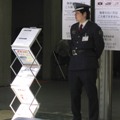 |
|
| I negotiated a contract
with the Danish manufacturer becomming sole agent in Japan.
Further, I contacted all the companies (exhibition equipment
leasing companies) that I knew were interstd in the product.
But none of them wanted to become the first user of the
product. So what I did was to contact the organizer of the
biggest exhibition event in Japan, as I knew the director of
this company personally. I also knew that if they pushed a
leasing company to take in my product, they wouldnt be able
to say no, and I would succeed. In Japan, you have a word called "jinmyaku". It simply means connections (business wise). Most people call it jinmyaku, if you have connection to a compay or a person. However, some Japanese tend to define jinmyaku as the persons you know, that will actually do something for you, or persons you know, that can actually make a difference for you. The reasons for this definition is simple - it doesnt matter if you know the whole world, if none of them want to do anything for you. What matters is the persons that will do something for you. This is real "jinmyaku". |
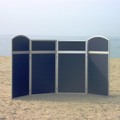 |
|
| I did some research to
find out which company the biggest organizer of exhibitions
in Japan ordered exhibition equipment from, and introduced
System Standex to this exhibition equipment leasing company.
Then I asked the organizer to ask specificly for my product
(System Standex) at this leasing company. I knew, that the
leasing company did not want to loose their largest
customer, so if this worked, my business would get a smooth
start. This strategy worked excaclty as planned. Within half a year, I had sold the first exhibition equipment to one of Japans largest exhibition equipment leasing companies. Now I had the needed reference for sale of my products to a well-known company within exhibition equipments. This meant a lot for establishing the brand image of System Standex in Japan. |
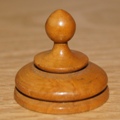 |
|
| When this reference was established, it became easier to sell the exhibition equipment to other companies. I used google adwords, email marketing, and other onliene tools, as well as visiting customers and getting introduction to new customers through my old nework within many industries. But the business did not grow as fast as expected, and I was forced to move to Shikoku (Matsuyama) where my Japanese wife had a house. Living there meant that I was able to cut the living cost significantly. However, it also meant a huge setback business wise, as most of my customers were located in Tokyo area, and visiting those became impossible as the transportation cost would eat up all profits. |
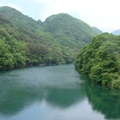 |
|
Rethinking the whole concept: |
||
| To survive, I simply
had to rethinking the whole setup which I did. Moving to Shikoku meant no possibility to visit customers regularly. Further it also meant that sending the goods to Tokyo became quite expensive, and I had to find a way to cut the direct product costs significantly to be able to make any profit at all. Luckily, I found out that there was an International airport in Matsuyama, 10 to 15 minutes drive from where I lived. The airfreight from Denmark did not become significantly more expensive by sending the goods to Matsuyama directly in stead of Tokyo (Narita). However, I was able to pick up the goods at the airport personally. This meant a significant cut of cost for the local transportation company. Further, if I could learn to do all the Japanese custom duty paperwork, then I would be able to cut further costs. At least so I thought... The Japanese custom wouldnt let me do so. They claimed that I had to use a local forwarder for transporting the product from the airpot to my office and local forwarder for the custom clearence. |
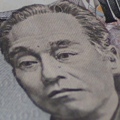 |
|
| So I studied the Japanese law regarding custom and found out that it actually was possible for anybody to do the custom paperwork. I didnt have to use a local company for this at all. So I studied how to make the custom paper work, learned it, created an excel sheet for the calculations and made a system which were able to print all the papers excactly as the Japanese custom officers wanted it. The custom was not at all happy when I requested to do it my self as they had never experienced any foreigners (probably not even Japanese either) doing all the paperwork them selves. But as I could document using the Japanese law, that it was my right to create the documentation my self, they had to accept it. They were not happy with me in the beginning, but after a while I became good friends with the custom officers in Matsuyama. Later I learned more about why the custom were not so happy about my way of doing things, but that is another story... |
 |
|
| Creating the custom paperwork my self and picking up the product in the airport meant everything. Now I had a product that were competitive, even if I imported only very few items each time. This meant that my delivery time was cut to under 10 days, even for custom made products. I didnt have to keep a very large stock for standard items either. For an imported product from Europe, this was quite amazing to be able to compete on almost all points with even Japaense made products. I had some of the best sales points compared to my competitors, the product was such a good quality that I gave three times as loong a guarantee as my competitors, my product had a fair price compared to the competitors, the design was good, product image was good and I was now able to send the products to Tokyo by air freight and still earn a reasonable profit on the products. I simply got one of the best concepts by moving to Shikoku, even the major reason was created by chance. I saw it, and I utilized it. |
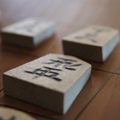 |
|
Customers: |
||
|
Thus the business was growing. I had customers like: 1. Hiratsuka Lease, and other major exhibition equipment leasing companies 2. Otafuku Sauce and other manufacturer 3. Louis Vuitton (Moet Hennessy) 4. Japanese well-known universities 5. many other companies |
 |
|
| Further, I had learned a lot when I was selling urinals about claim handling. During the two years I had this import business, I had no claims, no unsatisfied customers at all! | ||
Closing down: |
||
| Unfortunately I had to close down this business after only two years. The business seemed to be growing, but my Japanese wife wanted a divorse. It meant that I lost my working permit and permit to stay in Japan and I had to close the business and return to Denmark. I lost everything then, which was a quite tough experience. But this kind of experiences does really make one strong. |
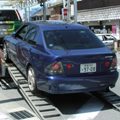 |
|
Want to know more? |
||
| If you want to know more about my achievements in Japan related to System Standex, please contact me. | ||
